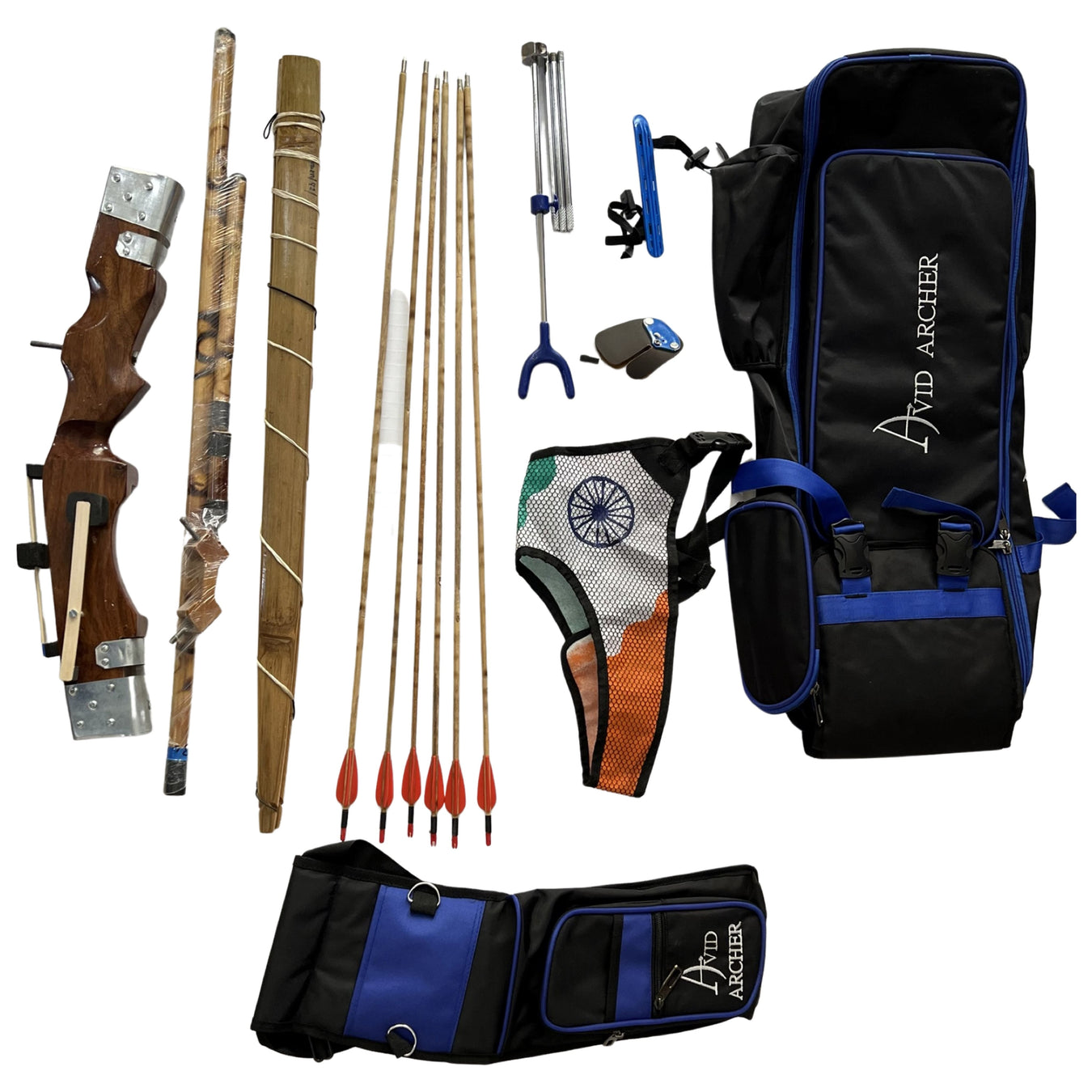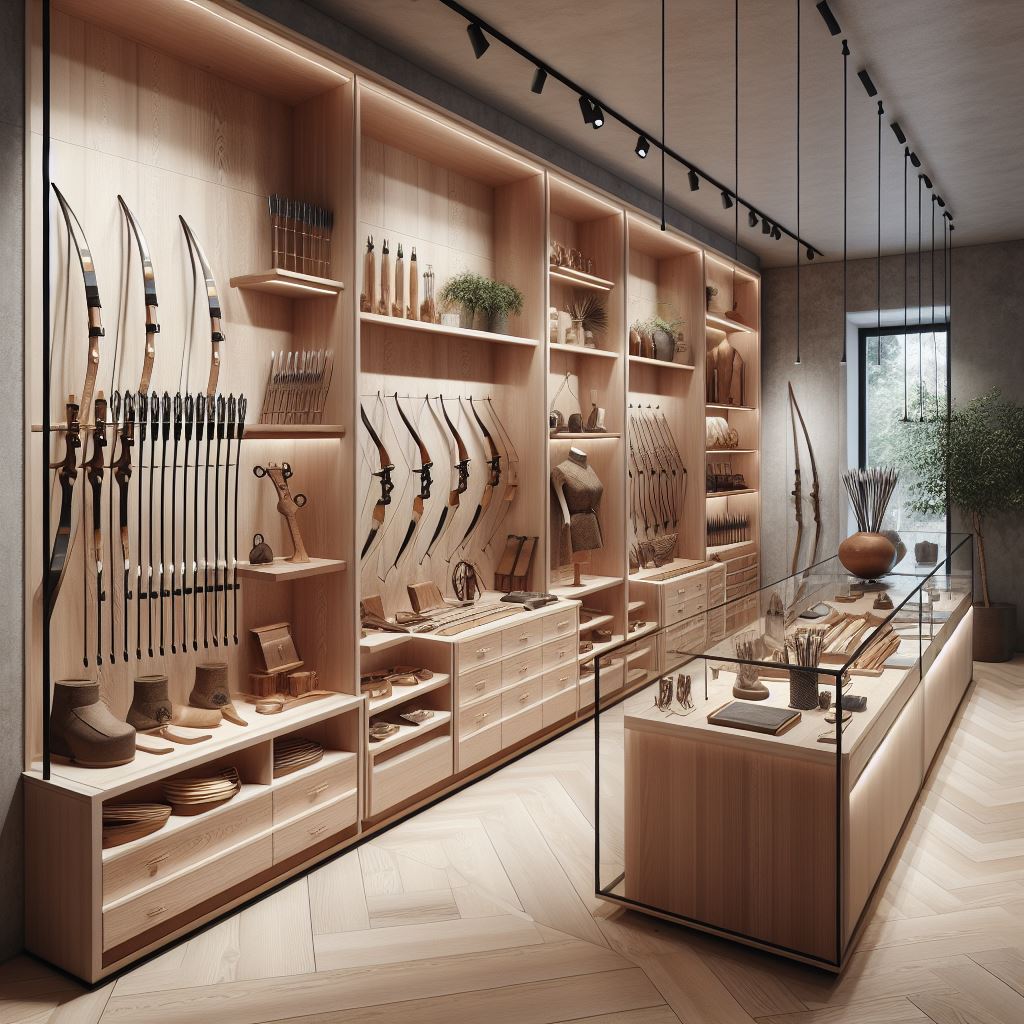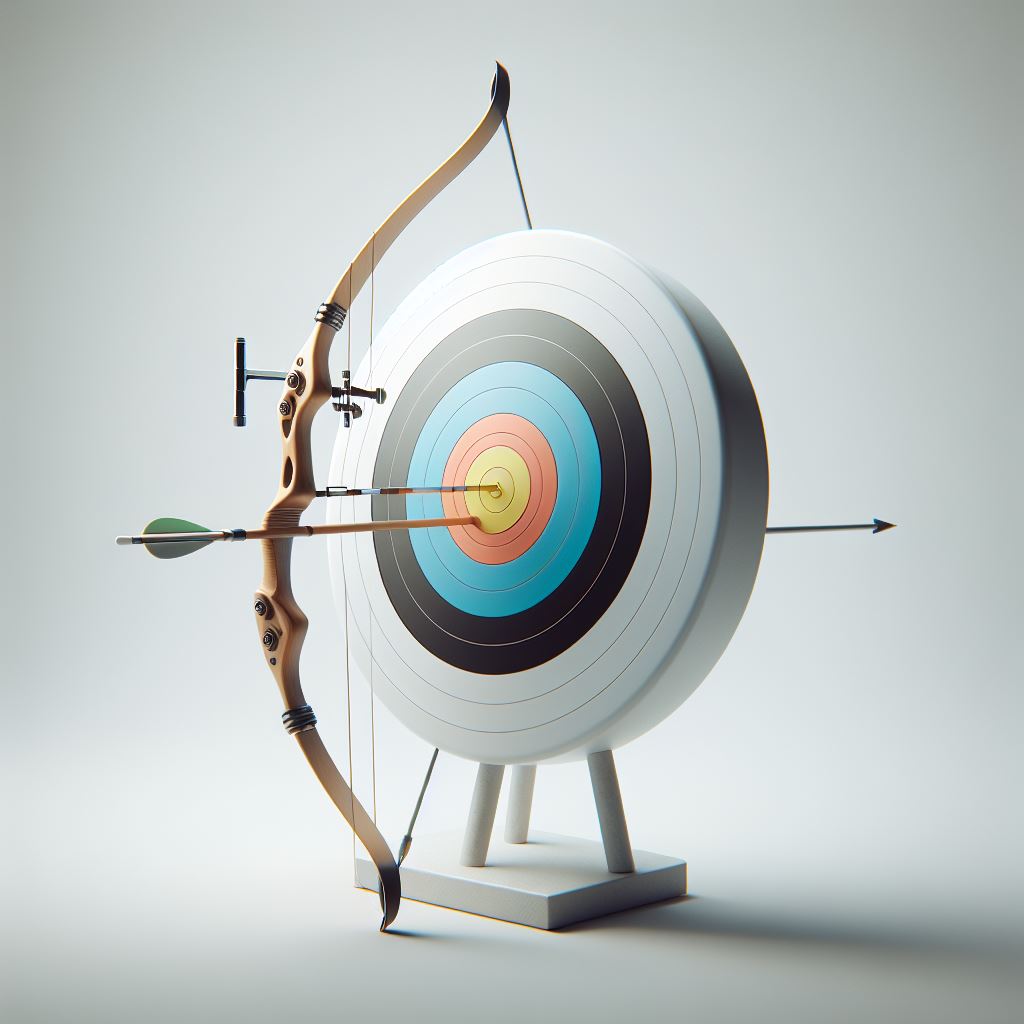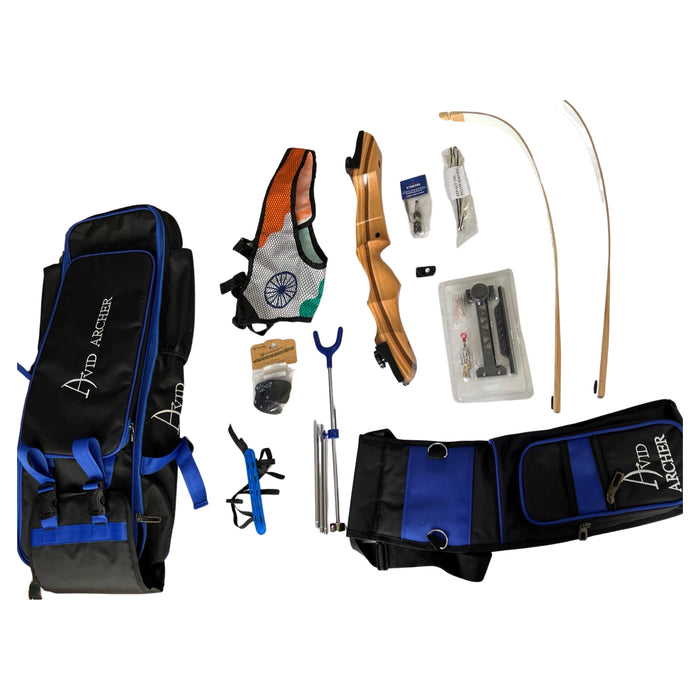
Archery Bows
Huge collection of wooden bows, recurve bows, compound bows of all popular brands at best price

Archery is an ancient and revered skill that has evolved over centuries. At the heart of this noble pursuit lies the archery bow, a crucial tool that can make or break an archer’s experience. Whether you’re a seasoned archer or a novice taking your first steps into this captivating world, understanding the intricacies of archery bows is essential.
Known for their elegant design, recurve bows have tips that curve away from the archer. They are favored for their simplicity, power, and versatility, making them suitable for beginners and experts alike.
Featuring a system of pulleys and cables, compound bows offer a mechanical advantage, allowing archers to hold the bow at full draw with less effort. This makes them a popular choice for hunting and target shooting.
The wooden bow stands as a timeless symbol of archery’s rich history and traditional craftsmanship. Crafted from various types of wood, these bows exude a natural charm and a connection to the roots of this ancient art. Wooden bows often appeal to archers who appreciate the tactile feel and authenticity that comes with using a bow made from materials sourced from the earth. Whether it’s the classic elegance of a longbow or the simplicity of a recurve, wooden bows require a deep understanding of the material’s characteristics, demanding a harmony between the archer’s skill and the bow’s natural design. Each wooden bow tells a story of meticulous craftsmanship and a dedication to preserving the essence of archery in its purest form.
The draw weight of a bow is the force required to pull the string to full draw. It’s crucial to select a bow with an appropriate draw weight based on your physical strength and skill level. Starting with a lower draw weight allows beginners to develop proper form without straining.
The length of a bow is a critical factor. Taller individuals generally benefit from longer bows, while shorter bows are more maneuverable. Understanding your draw length is essential for achieving accuracy and comfort.
Bows can be crafted from various materials, such as wood, fiberglass, and carbon fiber. Traditionalists often appreciate the natural feel of wooden bows, while modern archers may prefer the strength and durability of composite materials.
• Sights: Improve accuracy by using sights that help you aim consistently.
• Arrows: Consider the material, weight, and spine of your arrows for optimal performance.
• Stabilizers: Reduce vibrations and enhance stability during the shot.
Regularly inspect your bow for any signs of damage, and replace strings when needed. Keep your bow stored in a cool, dry place, away from extreme temperatures and humidity.
If you’re unsure about which bow is right for you, seek guidance from experienced archers or visit a reputable archery shop. Trying out different bows and receiving expert advice can make a significant difference in finding the perfect match.
You can browse collection of bows at ArcheryKart to explore different categories of bows.
In conclusion, the archery bow is more than a tool; it’s an extension of the archer’s skill and passion. Whether you’re drawn to the elegance of a recurve bow, the precision of a compound bow, or the simplicity of a longbow, understanding the nuances of each type will help you embark on a rewarding archery journey. Choose wisely, practice diligently, and let the arrows fly true.

Huge collection of wooden bows, recurve bows, compound bows of all popular brands at best price

Archery arrows at best price, great selection of wooden arrows, carbon arrows for recurve and compound bow

Best collection of bow bags, Indian Round Bow Bag, Recurve Bow Bag, Compound Bow Bag

Archery set for beginners, Indian archery set, recurve archery set, takedown bow set, compound bow set

Large collection of archery accessories having all gears of popular brands

Custom handmade full length 6 arrows with rubber fletches. Unmatched quality and have very good performance and highly rated my many Indian archers...
View full detailsAre you planning to experience archery? If yes, then this kit is specifically designed for beginners who want to experience the game of archery. It...
View full detailsPractice is important for all the games and archery is no different. Archers need to practice everyday to excel. Sometimes you just can't practice ...
View full details122x122cm, Target face for archery shooting, FREE four face pins Ideal for match and daily practice Outdoor shooting face Standard target face fo...
View full detailsWhen you play archery, then bow string can hurt your arm when string is released to hit arrow on target. Arm guard protects your arm from the bow s...
View full details
Are you planning to experience archery? If yes, then this kit is specifically designed for beginners who want to experience the game of archery. It's cost effective and includes all the equipment which are required to play the game. Kit contains following:
It is the best choice for all age and gender, products are well tested and made of premium quality dense hard timber riser and seasoned hardened bamboo which is used for the limbs
Archer can shoot longer without much fatigue. Playing with takedown bow is so much fun and very relaxing, the options for multiple limb weights offers flexibility, arrows fly from it just as fast as a professional recurve bow and fly's off very smoothly. It shoots very consistently and is very quiet without anything extra on it.
Easy to take down and assemble. Very solid when assembled, very small when collapsed, fits in its backpack easily. Using a stringer tool is the safest way to properly set up or take apart the bow.
AVALON Recurve Bow Stringer The AVALON Recurve Bow Stringer is an essential tool for every archer who owns a recurve bow. Designed by the renowned ...
View full detailsPractice is important for all the games and archery is no different. Archers need to practice everyday to excel. Sometimes you just can't practice ...
View full detailsA bowstring joins the two ends of the bow and launches the arrow. Bowstring can have a profound impact on many aspects including accuracy, bow perf...
View full detailsSanlida Noble Standard Beginner & Intermediate Recurve Bow Kit The Sanlida Noble Standard Beginner & Intermediate Recurve Bow Kit is the pe...
View full detailsThe new Hoyt Stratos raises the industry benchmark to match today’s demands of the world’s best archers. The Stratos features the all-new, extremel...
View full detailsThe new Hoyt Stratos raises the industry benchmark to match today’s demands of the world’s best archers. The Stratos features the all-new, extremel...
View full detailsThe new Hoyt Stratos raises the industry benchmark to match today’s demands of the world’s best archers. The Stratos features the all-new, extremel...
View full detailsThe new Hoyt Stratos raises the industry benchmark to match today’s demands of the world’s best archers. The Stratos features the all-new, extremel...
View full detailsHOYT PODIUM X ELITE COMPOUND BOW The Hoyt Podium X Elite Compound Bow is designed for archers who demand precision and performance. Whether you're ...
View full detailsTakedown bow is best suited for beginners and a good way to start the game of archery. Archer can play with it up to 50 meters easily. Best quali...
View full detailsSpecifications:Probably the lightest metal riser for beginners on the market currently!With only 699g it is unbelievably light, fits quite well in ...
View full detailsSpecifications:Core Pulse are entry level laminated wood recurve limbs. Available in many different sizes and a wide range of poundages to suit arc...
View full detailsSpecifications: Core Hit Black limbsWooden recurve limbs.Bow Lengths: 54in, 58in, 62in, 66in, 68in, 70inDraw Weights: 10lbs to 44lbs in ...
View full detailsSpecifications:The Air by Core Archery is a 25 inch length lightweight magnesium alloy riser which allows the fitting of ILF (International Limb Fi...
View full detailsIntroducing our premium archery bow bag – the ultimate companion for your gear. Crafted with durable, premium material, this bag ensures optimal pr...
View full detailsIntroducing our premium archery bow bag – the ultimate companion for your gear. Crafted with durable, premium material, this bag ensures optimal pr...
View full detailsIntroducing our premium archery bow bag – the ultimate companion for your gear. Crafted with durable, premium material, this bag ensures optimal pr...
View full details
Leave a comment